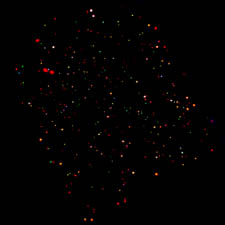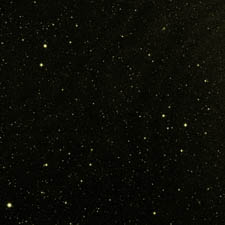Lockman Hole

A deep X-ray Chandra image of the Lockman Hole. Virtually each of these dots - with the red objects usually cooler than the blue objects - represents a supermassive black hole. Credit: ASA/CXC/U. Wisconsin/A. Barger et al.

A Digitized Sky Survey (DSS) of the Lockman Hole in visible light. The field of view is slightly larger than the Chandra image. Credit: Pal.Obs. DSS.
The Lockman Hole is a patch of the sky, lying roughly between the pointer stars of the Big Dipper (centered at RA 10h 45m, Dec +58° 00'), with an area of 15 square degrees, that is almost free from absorption by neutral hydrogen gas in the Galaxy. Having the minimum column density of galactic hydrogen, it allows the most sensitive searches for extragalactic objects and, for this reason, is one of the best studied sky areas across a very wide range of wavelengths, from radio waves to gamma rays.


